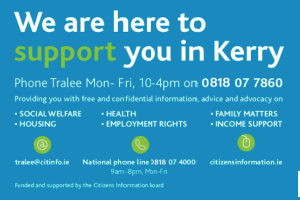 THE numbers of patients waiting on trolleys at University Hospital Kerry has risen from 623 in 2010 to 2,215 in 2017 according the the latest trolley watch figures.
THE numbers of patients waiting on trolleys at University Hospital Kerry has risen from 623 in 2010 to 2,215 in 2017 according the the latest trolley watch figures.
The figures from the Irish Nurses and Midwives Organisation (INMO) also show that there was an increase of one third on the 2016 figure at UHK.
The INMO annual Trolley and Ward Watch figures are not disputed by the HSE. The INMO began recording the figures in 2006.
Looking at the figures over the years, the numbers stayed between 600 and 700 for four years at the turn of the decade but has shot up significantly every year since 2014. The number of patients waiting on trolleys at UHK from 2006 to 2017 can be seen below…
2006 — 1,144
2007 — 507
2008 — 763
2009 — 337
2010 — 623
2011 — 672
2012 — 606
2013 —694
2014 — 1,005
2015 — 1,389
2016 — 1,664
2017 — 2,215
Today, there are 23 patients waiting on trolleys at the hospital.
Overall, throughout 2017, 98,981 admitted patients were recorded as awaiting a bed in hospitals throughout the country.
University Hospital Limerick recorded the highest annual number of 8869 followed by Cork University Hospital and University Hospital Galway recording 6815 and 6563 respectively.
The Mater University Hospital in Dublin was the capital’s most overcrowded hospital with 5238 patients on trolleys during 2017.
Reacting to the level of overcrowding, Phil Ni Sheaghdha, the newly appointed General Secretary of the INMO, called on the HSE to explain how the predictable increases in Emergency Department (ED) admissions remain outside of the scope of hospitals to manage and control:
“Overcrowding in late December and early January is getting worse. Despite investment in winter plans, smaller hospitals are now severely overcrowded which is manifestly unsafe and leads to higher cross infection and poorer outcomes for patients. Nursing staff, constantly working in this high pressure, unsafe environment, cannot be expected to put up with this obvious neglect of duty of care to them and the patients they try to care for any longer. It appears to me, that staff and patients, on the front line, were abandoned while the system shutdown for Christmas and the New Year.”












